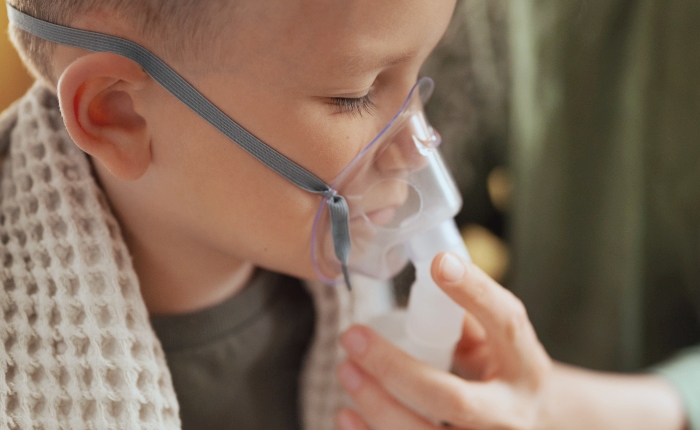The Role of Nebulizers in Pediatric Respiratory Care: What Every Doctor Should Know
March 25, 2025 2025-03-26 14:26
The Role of Nebulizers in Pediatric Respiratory Care: What Every Doctor Should Know
The information provided on this website is for educational and informational purposes only and is not intended as medical advice. We are not licensed medical professionals, and the content shared here should not be used to diagnose, treat, or replace the advice of your healthcare provider. Always consult your doctor or qualified medical professional before starting any treatment or using any medical devices. Follow your doctor’s instructions above all else.
Respiratory illnesses are among the most common health concerns in pediatric medicine, affecting millions of children worldwide. Nebulizers play a vital role in the treatment of various respiratory conditions, offering an effective and child-friendly way to deliver medication directly into the lungs. But how do nebulizers compare to other treatment methods, and when should doctors recommend them to parents?
In this article, we’ll explore:
✔ How nebulizers differ from other respiratory treatment methods
✔ Which pediatric conditions benefit the most from nebulizer therapy
✔ Common mistakes and best practices when recommending nebulizers to parents
1. Nebulizers vs. Other Treatment Methods: What’s the Difference?
Nebulizers are just one of several ways to administer medication for respiratory conditions, so how do they compare to inhalers and oral medications?
✔ Nebulizers vs. Inhalers – While inhalers (MDIs or DPIs) require children to coordinate their breathing with actuation, nebulizers provide a continuous mist, making them easier to use for younger children and those with severe respiratory distress.
✔ Nebulizers vs. Oral Medications – Oral medications, such as syrups or tablets, must pass through the digestive system before taking effect, while nebulizers deliver medication directly to the lungs for faster relief.

🔹 When to Choose a Nebulizer:
- For infants and young children who struggle with inhaler coordination
- When high doses of medication need to be delivered effectively
- For children experiencing acute respiratory distress
2. Pediatric Conditions That Benefit from Nebulizer Therapy
Nebulizers are particularly effective for treating lower respiratory tract conditions, as they allow medications to reach deep into the lungs. Some of the most common pediatric conditions that benefit from nebulizer therapy include:
🔹 Asthma – Nebulizers are often recommended for younger children with asthma, providing quick relief from bronchospasms and inflammation.
🔹 Bronchiolitis – In severe cases, nebulizers help reduce airway swelling and mucus buildup in infants and toddlers.
🔹 Croup – A nebulized steroid or epinephrine treatment can ease severe airway obstruction.
🔹 Pneumonia – While antibiotics treat bacterial pneumonia, nebulized bronchodilators can help improve breathing efficiency.
🔹 Cystic Fibrosis – Nebulizers play a crucial role in mucus clearance by delivering specialized medications to loosen lung secretions.
💡 Note: While nebulizers are highly effective, they are not always the first-line treatment. A doctor’s assessment is essential to determine if nebulized therapy is the best option.
3. How to Recommend a Nebulizer to Parents: Best Practices
Many parents are unfamiliar with nebulizers or may feel intimidated by the idea of using one at home. As a doctor, here’s how you can guide them through the process:
✔ Explain When and Why a Nebulizer is Needed – Clarify that a nebulizer is recommended based on their child’s condition, age, and symptoms.
✔ Demonstrate Proper Usage – Show parents how to set up, clean, and use the nebulizer to avoid medication loss and bacterial contamination.
✔ Address Common Concerns – Some parents worry that nebulizers are too complicated or that their child may refuse treatment. Suggest child-friendly designs (such as animal-shaped nebulizers) and distraction techniques to make the experience easier.
✔ Provide Clear Cleaning Instructions – Improper cleaning can lead to infections or reduced effectiveness. Ensure parents understand how to properly sanitize the device after each use.
Final Thoughts
Nebulizers are an essential tool in pediatric respiratory care, offering an effective, easy-to-use solution for children who need targeted lung therapy. By understanding when to recommend nebulizers and how to educate parents, doctors can ensure young patients receive the best possible care.
💡 Have you found nebulizers useful in your pediatric practice? Share your experiences and tips in the comments below!
Search
Categories

